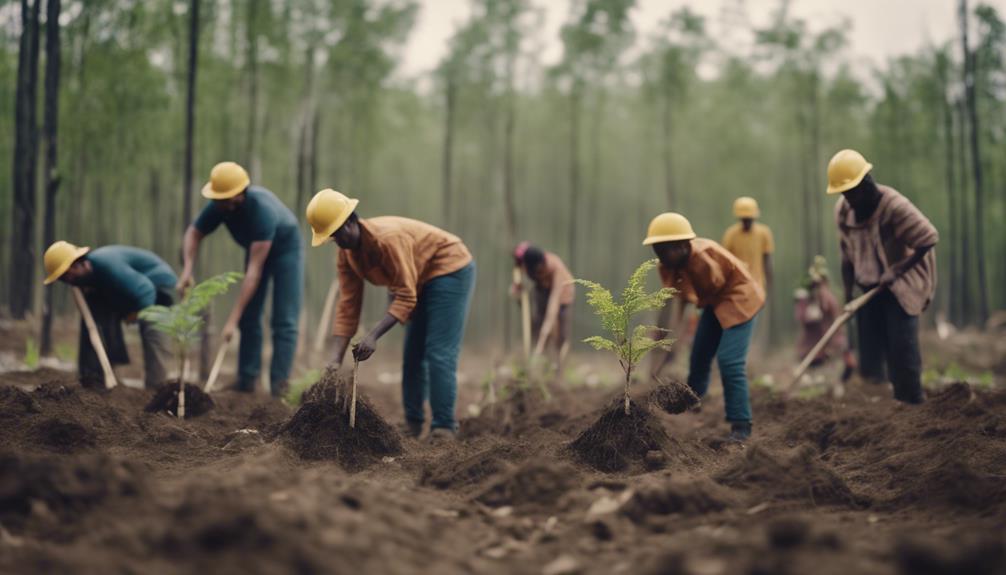When we talk about being ready for climate change, imagine a strong ship sailing through rough waters – strong, flexible, and ready for anything. Just like a ship needs a smart captain and a good plan, our world needs smart investments to handle the challenges of climate change.
Impact investing strategies give us hope in tough times, showing us a way to not just survive but thrive despite environmental issues. Bringing together climate resilience and impact investing is the way to build a sustainable future for everyone.
Importance of Impact Investing in Resilience

Impact investing is really important for dealing with climate change problems. When we invest money in projects that help society and the environment, we're making our communities stronger and better able to handle the challenges of climate change. By choosing where to put our money, impact investors can support projects that not only help right away with climate risks, but also make sure we can keep going in a sustainable way for the long term.
Social innovation is a big part of impact investing. It means finding new and better ways to solve big problems like climate change. When we invest in businesses that care about sustainable practices, we're helping to build communities that can survive and thrive even when the environment changes. This smart way of investing doesn't just help the planet, it also brings good things to people's lives, making a positive impact on society and the environment.
Financial Incentives for Climate Resilience
Improving financial rewards is really important for encouraging people to invest in ways that can handle climate change. When there are incentives like tax breaks, subsidies, grants, or low-interest loans for investing in climate-resilient projects, more individuals and groups are likely to choose sustainable options that help the environment and their finances.
Money plays a big role in why financial incentives work for climate resilience. When investors have a financial reason to support projects that are good for the environment, they not only help create a more resilient future but also have the chance to make money from their investments. This double benefit makes it very appealing for stakeholders to put their money into projects that reduce climate risks.
In the world of impact investing, including financial incentives for climate resilience is crucial for encouraging a focus on sustainable development. By rewarding investments that help the environment deal with climate change, stakeholders are motivated to think about long-term sustainability while also making a profit. This two-pronged approach not only boosts climate resilience but also pushes us towards a more sustainable future.
Mitigating Risks Through Impact Investments

Using impact investments strategically can help reduce risks from climate change and support sustainable development projects. Impact investments are a way to invest money in projects that not only make a positive impact on society and the environment but also provide financial returns. By putting money into projects that have social and environmental benefits, investors can help communities become more resilient to climate change.
Managing risks is important when making impact investments. This means understanding, evaluating, and reducing any potential risks that could affect the success of sustainable projects. By doing thorough research and using tools to measure impact, investors can make smart choices that not only help people and the environment but also protect their investments from climate-related risks.
We can achieve sustainable development goals by making strategic impact investments that focus on building resilience. By supporting projects that help communities adapt to climate change and reduce its impact, investors can help create a more sustainable future. Investing in climate-resilient infrastructure, renewable energy, and protecting ecosystems not only helps reduce climate risks but also improves society's well-being. Impact investments are a great way to align financial interests with environmental and social goals, bringing positive change for a more resilient future.
Building Community Resilience With Impact
Building Community Resilience With Impact
To make communities stronger, it's important to invest in projects that help them deal with climate change and reduce risks. Impact investments can make a big difference by supporting community empowerment and sustainable development. When we invest in projects that improve infrastructure, encourage sustainable farming, and provide clean energy, we help communities become more resilient to climate challenges.
Here's how these investments can help:
- Building strong infrastructure helps communities withstand disasters better.
- Sustainable farming ensures better food security and incomes for people.
- Clean energy reduces the use of fossil fuels, cutting down on harmful emissions.
These investments not only help communities adapt to climate change but also create lasting benefits by promoting sustainable development. By backing initiatives that focus on community resilience, impact investors can help build a more sustainable and resilient future for everyone.
Future-proofing Through Impact Investments

Investors can help communities for the future by making smart investments that focus on being strong and lasting. By putting money into things that make communities stronger and more sustainable, they can make sure they'll be successful for a long time.
Here's how these investments can help communities in the future:
- Spreading out Investments: Putting money into different things in different places can help reduce risks from things like climate change.
- Working with Others: Talking to the people who live there, the government, and experts can help find better and long-lasting solutions.
- Using New Technology: Using new and cool technologies like renewable energy and smart buildings can make communities stronger and protect the environment.